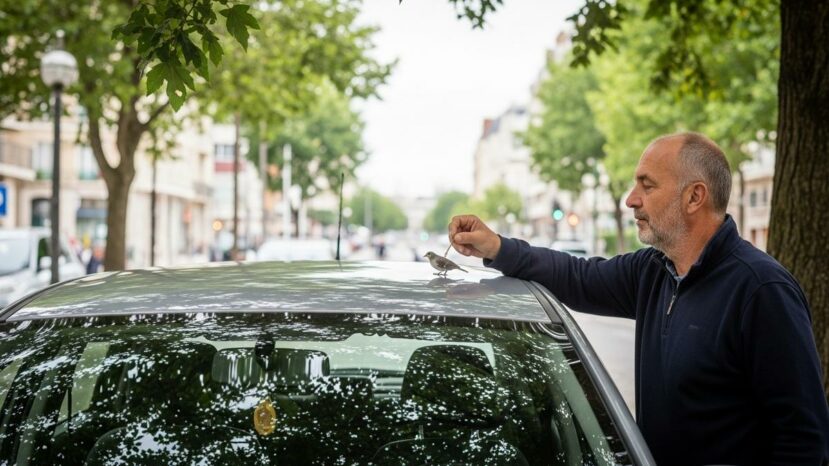Birds: science explains why they target certain cars to defecate, according to a US study

Do you have the impression that some cars systematically attractbird droppings? It’s an irritating subject, but it deserves a clear explanation, based on recent observations and practical advice. Here’s what we know, without alarmism, about this phenomenon which is affecting more and more cars in urban areas.
Do birds really target certain cars?
According to a reference article relaying research carried out in the USA, birds do not “target” a specific brand or model. Contrary to popular belief, color does not appear to be the decisive factor. The immediate context is more important than the color. In short, where you park is more important than body color.
The researchers point out that escape behavior often occurs during take-off or after a meal. Consequently, a vehicle parked under a perch, ledge or branches becomes a logical target. In addition, smooth, wide surfaces act as a reassuring “floor” for the bird. On the other hand, an open parking lot with no nearby trees significantly reduces exposure.
Color, reflections and visual illusions
Color can influence reflections, but only in a secondary way. For example, some glossy paints create mirrors that intrigue urban species. Moreover, the polarization of light on a wet hood can attract attention. This visual signal is less decisive than the presence of perches.
“
Color is less important than where you park”
Reflections vary according to the time of day and the angle of the sun. As a result, the same vehicle will appear more “visible” in the morning than at dusk. On the other hand, an overcast sky attenuates this contrast. As a result, the “target” effect changes throughout the day.
Three major factors to watch out for
1) Location: parking under trees, lampposts or cables increases deposits. In other words, every spot that offers a bird a resting place increases the risk. What’s more, feeding near a fast-food outlet or garbage can attracts opportunistic birds. Cars parked near these areas often foot the bill.
- Choose a location with no immediate perches.
- Avoid branches above the roof and windshield.
- Identify recurring feeding areas.
- Open parking is preferred whenever possible.
- Observe local flight paths.
2) Species present: pigeons, starlings and seagulls live at human pace. So they gather where food is plentiful. As a result, a parking lot next to a catering outlet will be more exposed. Cars located in these convenient corridors will absorb more droppings.
3) Surface and maintenance: a clean, smooth body retains less dirt, but it remains visible. What’s more, water droplets and varnish create temporary mirrors. On the other hand, a cover reduces the attractiveness and availability of the surface. Protecting the hood from time to time makes all the difference.
What the observations relayed by Slate have to say
The core of the message is simple: there‘ s no solid proof that car color is enough. The work cited in the United States emphasizes the immediate environment. What’s more, they emphasize the variability according to species and time of day. Consequently, prevention begins with the choice of parking.
Another important point: physiology plays a role. For example, defecation often occurs during take-off, a frequent occurrence in the city. Multiplying the number of landing points above an alley accentuates the risk. Cars then become a mere support in this urban choreography.
I’m ready to receive the text or HTML of the article to extract the product references according to your instructions.
Please paste the content to be analyzed.
Prevent damage and act stress-free
Bird droppings contain uric acid, which is potentially corrosive to varnish. So, a quick rinse will limit traces. What’s more, a damp microfiber and a mild cleanser will suffice in most cases. Dry scrubbing, on the other hand, scratches paint unnecessarily.
Keep things simple when parking. Observe perches, cables and ledges before turning off the engine. Also, if necessary, park a few meters apart. The cars will then be quieter without any particular effort.
Accessories can help, depending on the context. For example, a lightweight cover or external sun visor protects the hood at critical times. In addition, a protective wax makes subsequent cleaning easier. Cars that are exposed to a lot of city traffic benefit from these flexible solutions.





No comments
Post a comment
Always participate in accordance with the law and with respect for others.